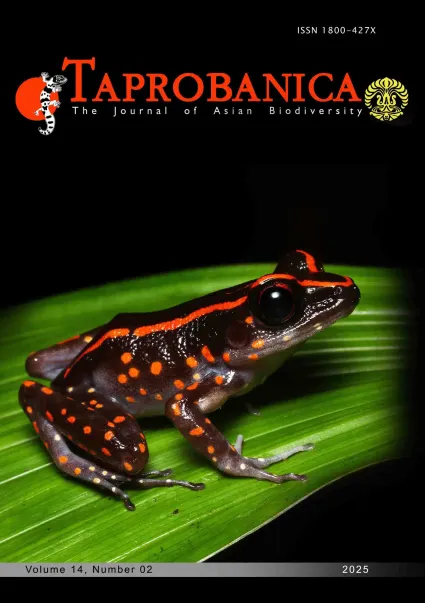

v14i2.374
Volume 14 | Number 2 | November 2025
Major Article
eISSN: 1800-427X (online)
DOI:10.47605/tapro.v14i2.374
Submitted date: 20 January 2025
Accepted date: 22 September 2025
Published date: 30 October 2025
Pp. 214–229.
DECODING ARCHAEOFAUNAL BIODIVERSITY IN THE KARMA VIBHANGA (KARMAWIBHANGGA) RELIEFS OF BOROBUDUR TEMPLE – INDONESIA, AND ITS IMPLICIT MEANINGS
Ibnu Maryanto*, Aris A. Mundayat, Hidayat Ashari, Fauziah Fauziah, Dony S. Wibowo, Wawan Sujarwo, Mohamad Habibi & Rusdianto Rusdianto
*Corresponding author. E-mail: ibnumaryanto@gmail.com
Abstract
Borobudur Temple in Indonesia is one of UNESCO’s World Heritage sites, renowned for its exquisite architecture, adorned with intricate reliefs, sculptures, and stone outcrops. A notable aspect that has not been exhaustively examined is the presence of diverse forms of archaeofauna depicted in the carvings of the Karmawibhangga relief. By employing the methodologies of intra-, inter-, and extratextuality, the examination of these reliefs as ecological and cultural texts unveils the broader implications associated with the incorporation of fauna within the narrative of the Karmawibhangga. The examination of 160 panels of Karmawibhangga reveals 52 species of archaeofauna, classified into the following taxonomic groups: mammals, birds, reptiles, fish, and molluscs. The archaeofauna functions as a valuable indicator of temporal, natural, and symbolically meaningful expectations related to the designated aspects, particularly human behaviour. These conditions serve to underscore the fact that Karmawibhangga reliefs serve as a means of conveying natural scientific principles and cultural critique in a manner that is more accessible to readers.
Section Editor: Anne-Marie Moigne
DOI:10.47605/tapro.v14i2.374
Submitted date: 20 January 2025
Accepted date: 22 September 2025
Published date: 30 October 2025
Pp. 214–229.
DECODING ARCHAEOFAUNAL BIODIVERSITY IN THE KARMA VIBHANGA (KARMAWIBHANGGA) RELIEFS OF BOROBUDUR TEMPLE – INDONESIA, AND ITS IMPLICIT MEANINGS
Ibnu Maryanto*, Aris A. Mundayat, Hidayat Ashari, Fauziah Fauziah, Dony S. Wibowo, Wawan Sujarwo, Mohamad Habibi & Rusdianto Rusdianto
*Corresponding author. E-mail: ibnumaryanto@gmail.com
Abstract
Borobudur Temple in Indonesia is one of UNESCO’s World Heritage sites, renowned for its exquisite architecture, adorned with intricate reliefs, sculptures, and stone outcrops. A notable aspect that has not been exhaustively examined is the presence of diverse forms of archaeofauna depicted in the carvings of the Karmawibhangga relief. By employing the methodologies of intra-, inter-, and extratextuality, the examination of these reliefs as ecological and cultural texts unveils the broader implications associated with the incorporation of fauna within the narrative of the Karmawibhangga. The examination of 160 panels of Karmawibhangga reveals 52 species of archaeofauna, classified into the following taxonomic groups: mammals, birds, reptiles, fish, and molluscs. The archaeofauna functions as a valuable indicator of temporal, natural, and symbolically meaningful expectations related to the designated aspects, particularly human behaviour. These conditions serve to underscore the fact that Karmawibhangga reliefs serve as a means of conveying natural scientific principles and cultural critique in a manner that is more accessible to readers.
Section Editor: Anne-Marie Moigne
- List of Articles & Contents





